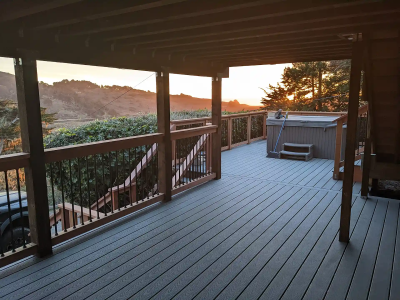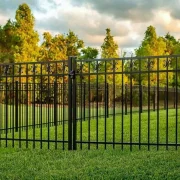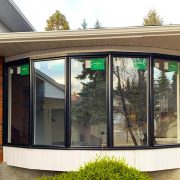Tree pruning represents perhaps the most critical intervention in the lifecycle of your garden’s silent sentinels. The careful removal of dead or overgrown branches might appear, to the untrained eye, as simple cosmetic surgery—but beneath this superficial understanding lies a profound science that determines the very future of your landscape. As I’ve observed throughout my investigations into urban forestry practices in Singapore and beyond, few garden owners truly comprehend the delicate balance between aesthetic desires and botanical necessities.
The Hidden Science Behind the Cut
When examining the practice across historical contexts, one discovers that tree pruning evolved from mere decorative shaping into a sophisticated discipline. The National Parks Board of Singapore notes, “Proper pruning techniques are essential for tree health and structural integrity. Incorrect cuts can lead to decay, disease introduction, and ultimately tree failure.”
What separates proper technique from dangerous hacking? Consider these fundamental principles:
- The 30% rule: Never remove more than one-third of a tree’s crown in a single pruning session
- Clean cuts just outside the branch collar, avoiding flush cuts that damage trunk tissue
- Strategic timing based on species, with most deciduous trees responding best to dormant-season pruning
- Removal prioritisation: dead, diseased, or damaged branches first
The consequences of ignoring these principles extend far beyond aesthetics. They penetrate deep into the biological systems that determine whether your trees thrive or merely survive.
Singapore’s Unique Tropical Challenges
The equatorial climate presents distinct challenges for arborists and garden enthusiasts alike. Singapore’s Gardens by the Bay arboriculture team explains: “In our tropical environment, trees grow year-round without true dormancy. This means pruning must be approached differently than in temperate regions, with greater attention to fungal pathogens that thrive in our humidity.”
Common Singapore species like Rain Trees (Samanea saman) and Angsana (Pterocarpus indicus) require specialized approaches to pruning. Their rapid growth rates and massive canopies demand more frequent intervention compared to temperate counterparts, with some specimens requiring assessment every 12-18 months rather than the 3-5 year cycles typical elsewhere.
The monsoon seasons introduce additional complexities. Heavy rainfall coupled with sudden strong winds creates perfect conditions for tree failure when structural weaknesses exist. According to the Centre for Urban Greenery and Ecology: “Pre-monsoon pruning to reduce wind resistance and remove potentially hazardous branches has become standard practice for responsible tree management in Singapore.”
Beyond Aesthetics: The Security Imperative
One cannot separate the discussion of tree pruning from its safety implications. The silent threat of tree failure looms over densely populated urban areas. My investigations have revealed numerous instances where tragedy might have been averted through proactive pruning. The interconnected relationship between tree structure and public safety cannot be overstated, particularly in high-traffic areas where pedestrians routinely pass beneath ageing canopies. Schools, parks, and busy thoroughfares demand especially vigilant assessment and maintenance schedules.
The Singapore Civil Defence Force reports addressing fallen tree incidents following every major storm event. What many fail to recognise is that these are rarely “acts of God” but rather predictable consequences of neglect. The weight of evidence suggests that regular structural pruning significantly reduces failure rates even during Category 1 storms.
The Economic Calculation
Beyond the immediate safety concerns lies a cold economic reality: preventative pruning costs a fraction of emergency removal or liability claims. The mathematics are unambiguous:
- Professional preventative pruning: $200-400 per mature tree
- Emergency removal after failure: $800-2,000
- Property damage claims: potentially unlimited
- Medical expenses from injuries: potentially unlimited
The notion that tree care represents an optional luxury rapidly dissolves when confronted with these figures. What appears as frugality often transforms into costly negligence.
The Ecological Dimension
Beneath the practical considerations of safety and economics runs a deeper current—the ecological impact of our decisions. Proper pruning practices support biodiversity in urban environments. Singapore’s National Biodiversity Centre observes: “Well-maintained trees provide superior habitat for urban wildlife, including birds, insects, and small mammals essential to our ecosystem.”
The interconnectedness becomes apparent when one considers:
- Properly pruned trees develop stronger branch attachments, supporting more nesting sites
- Strategic thinning allows for understory plant diversity
- Removal of dead material while preserving some habitat features balances safety with ecological function
- Careful crown reduction preserves sightlines for predatory birds like brahminy kites and white-bellied sea eagles
- Selective pruning can enhance flowering and fruiting, providing food sources for Singapore’s remarkable 324 recorded bird species
Research from Singapore’s Urban Redevelopment Authority demonstrates that streets with well-maintained trees experience measurably higher insect and bird diversity compared to those with neglected or improperly maintained specimens.
The Path Forward
For the conscientious homeowner or property manager, the evidence points toward a clear course of action. Engage with certified arborists who understand both the science and art of tree care. Demand evidence-based practices rather than the cheapest quote. Recognise that what appears as an expense today represents an investment in safety, property value, and environmental stewardship. Developing a comprehensive maintenance calendar with professional guidance ensures your trees receive appropriate care through each season, avoiding both under-maintenance and the equally problematic over-pruning that weakens tree structure and invites disease. The ancient Chinese proverb that “the best time to plant a tree was twenty years ago; the second best time is now” might be extended to tree maintenance. The optimal time to establish proper tree care practices was when your trees were planted; failing that, today represents your best opportunity to begin systematic tree maintenance.














Comments